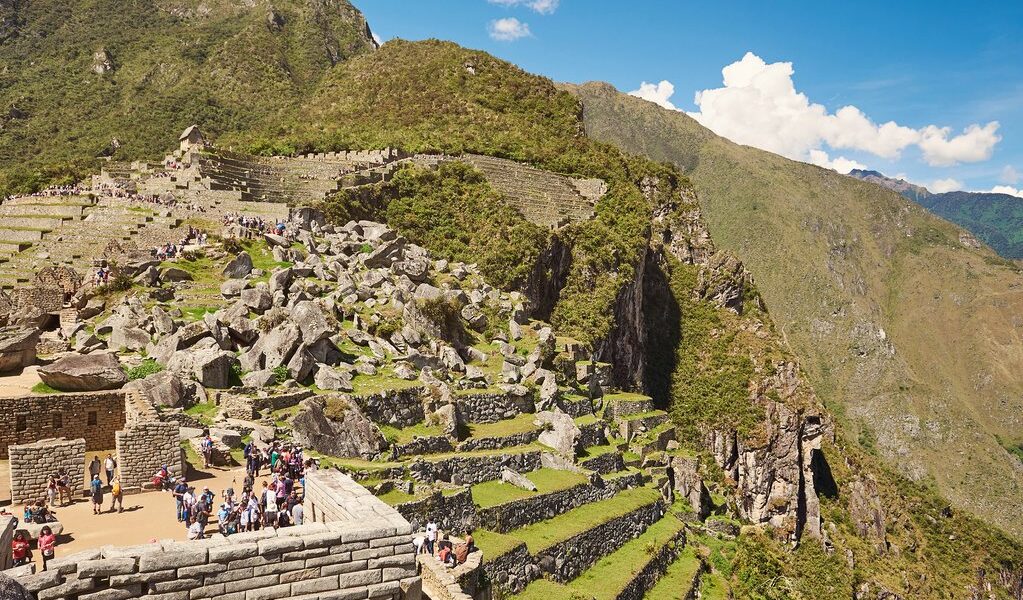
The two intriguing festivals of Día de Todos Santos (November 1) and Día de los Muertos (November 2) make this a very interesting month to visit Cusco and the Sacred Valley. Rainy season is here in earnest, however, and at Machu Picchu the cloud cover is often heavy. Trekking is harder in the rain this month, as is cycling, but rafting is more popular because of the higher water levels in the rivers.
## Experiencing Machu Picchu and Peru in November: A Comprehensive Guide
November in and around Machu Picchu offers a unique travel experience, presenting a blend of natural beauty, fewer crowds, and potential cost savings. While the weather may bring more rain, the advantages of visiting during this time can outweigh the challenges for the prepared traveler. Let’s delve deeper into what you can expect when planning a trip to this iconic destination in November.
**Weather Considerations**
The weather in the Machu Picchu region remains relatively consistent throughout the year, with minimal fluctuation between daytime highs and nighttime lows. Expect average highs around 70°F (21°C), creating a comfortably warm environment by Andean standards. Evenings can be cooler, with temperatures dropping to around 43°F (6°C), but rarely dipping below freezing. This means that even at night, the temperatures remain manageable, making it comfortable for visitors.
The primary weather factor to consider is the increased rainfall. November falls within the wet season, characterized by heavier rains, particularly in the afternoons. The buildup of rainwater throughout the month does elevate the risk of landslides in certain areas. However, the increased rainfall also brings a vibrant resurgence of flora. After several months of drier conditions, the Andean landscapes begin to bloom once more, transforming into a spectacle of bright greens. The Andes mountain range undergoes a colorful metamorphosis, making it a visual delight for nature lovers.
**Crowd Levels and Travel Costs**
November presents a sweet spot in terms of visitor numbers. Situated between the end of the shoulder season and the onset of the Christmas and New Year holiday rush, November generally sees the lowest levels of tourism. This translates into several advantages for travelers.
Firstly, securing deals on hotels and tours becomes significantly easier. With fewer visitors competing for accommodations and tour slots, prices tend to be more competitive. Secondly, planning your trip becomes a smoother process. You’ll encounter fewer instances of fully booked hotels or oversubscribed tours, allowing for greater flexibility and spontaneity in your itinerary. Furthermore, airlines often offer the year’s most attractive flight prices during this period, especially on international flights into Lima, making it even more budget-friendly.
**Destination Highlights: Where to Go**
One of the most compelling reasons to visit Machu Picchu in November is the opportunity to experience the site with significantly fewer crowds. You might encounter the fewest number of visitors throughout the year. However, bear in mind that the increased rainfall can impact the Inca Trail, leading to greater erosion and potentially more challenging trekking conditions.
Consider exploring alternative treks that are less frequented and better suited for November hiking. One such option is the 5-day Salkantay Trek, often incorporated into an 8-day visit to Peru’s Sacred Valley. This trek offers stunning scenery and a less crowded experience.
Given the wetter weather, plan on spending more time indoors during your visit to the Sacred Valley. While high season might encourage a focus on the countryside, November provides an opportunity to appreciate the area’s spectacular architecture and museums.
The city of Cusco, with its rich history and cultural attractions, offers a delightful escape from the rain. Explore its magnificent churches, museums, and historical sites. Furthermore, Cusco boasts a vibrant culinary scene, with exquisite restaurants and lively bars to enjoy. The smaller towns of Pisac and Ollantaytambo are also excellent choices for spending time indoors, offering unique cultural experiences and charming atmospheres. Finally, the thermal springs in Aguas Calientes and at Salinas near Maras provide a welcome respite for rain-drenched visitors seeking relaxation and warmth.
**Activities and Experiences**
While trekking in the rain can be less appealing due to muddy trails and limited shelter, November presents opportunities for other exciting activities. As trekking loses some of its appeal, rafting becomes especially tempting. Witness the sudden burst of color around Machu Picchu as the rains revitalize the landscape and bring the previously dry land back to life.
The rafting season on the Río Apurímac concludes at the end of November, but numerous other rivers in the region offer rafting experiences that can be enjoyed throughout the wet season. The Río Apurímac is renowned for its challenging rapids and stunning scenery, and while it may be coming to the end of its rafting season, exploring the other rivers in the area still brings a sense of adventure.
**November Cultural Events**
Two significant cultural events take place in Peru at the beginning of November: Día de Todos Santos (All Saints’ Day) on November 1 and Día de los Muertos (Day of the Dead) on November 2. These days are dedicated to honoring the memory of deceased loved ones.
In the highlands, it is customary to bring gifts of food to the dead in cemetery tombs. Candlelit vigils are held at cemeteries until dawn on November 2, creating a poignant and atmospheric scene. A special bread called tanta wawa is prepared and shared during these celebrations. Witnessing these traditions provides a glimpse into the rich cultural heritage of Peru. Visiting the highlands, the towns and villages offer a glimpse into the traditions and culture that still take place.
B-2053

